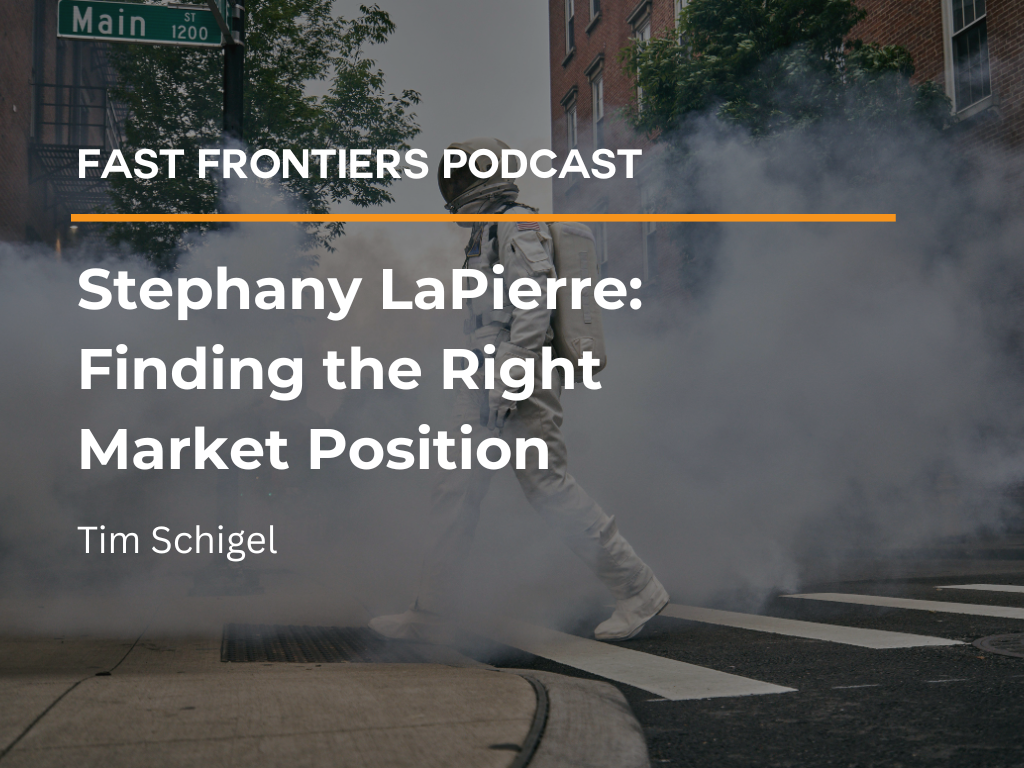We recently had the privilege of sitting down with Stephany Lapierre, founder and CEO of TealBook. She shared her journey to entrepreneurship, including the many lessons she’s learned along the way. And after our interview, it’s clear that neither she—nor her company— are done evolving.
Originally from Quebec, Stephany explained how she is a French Canadian who has always been searching for solutions. She’s also “had a million business ideas over the years,” so it came as no surprise when she started her own business aimed at helping companies find innovation. Of her journey, Stephany shared that throughout her career working in large pharmaceutical companies and startups, she “saw that there was a gap in enterprise that we’re always looking for differentiating.”
Specifically, she explained how a “company differentiating their brand and finding innovation is really hard.” To help remedy this, Stephany started a company called Matchbook at the time, which, just as the name infers, “was meant to matchmake companies who were looking for innovation with suppliers that were delivering innovation.”
The company was a hit, and the rest just seemed to flow naturally from there. Stephany summarized the progression: “Either we were finding suppliers that had built something similar [and] addressed a similar problem with another client, or bringing suppliers together to brainstorm on developing innovation. And that looked a lot like procurement and strategic sourcing.”
The Schism
The evolution continued. “Suddenly, my customers were these large companies [that] were trying to build a bridge between procurement, which is at the time really looking to save dollars, and the business [which] was looking to spend dollars,” she explained.
The remedy—or bridge—was to build a function of procurement called strategic sourcing, which was relatively new at the time. In response to this, Stephany saw a real opportunity to fulfill a need: “My firms started to build strategic sourcing functions for very large companies, and what we saw is that the friction came often out of not having the right information fast enough and having a lot of information in people’s heads.” Too much information, in fact. And that is how the name for TealBook originally came about.
Stephany shared how she was sitting with a client one day, who had wanted to tell her all about a new and amazing company, yet the client couldn’t remember the name off the top of her head. Stephany described her dismay at sitting there for a good ten minutes while the client attempted to rifle through a massive binder filled with business cards.
“I sat there for ten minutes watching her, and I was like, ‘This is crazy. There’s someone who’s bringing innovation to our business that no one else across our organization is aware of because the information isn’t in her head and in a binder!’”
Minding the Gap
That interaction stuck with Stephany, and as she built her consulting company over the next nine years, she kept seeing this same major gap in the enterprise—a gap she described as an “all-around lack of information that’s readily available, that’s insightful, [and] that’s relevant to the people using the information.”
Fast forward nearly a decade, and TealBook is taking the industry by storm, revolutionizing the data and procurement niches and offering innovative solutions never seen before. Stephany describes the nuts and bolts of what makes TealBook tick: “We use machines to grab data on every B2B company in the world.”
This data grab is intended to specifically find “what qualifies to be a B2B company,” which according to Stephany, includes criteria that answers questions. For example: “What about that Commented [KG1]: Make into infographic company’s interesting? [W]hat do they do? Where are they physically located? Who are they related to? Who [are] their customers [?] Who’s most similar to them? What’s their financial information? What are they certified for?” You get the picture.
The Big Grab
After grabbing this info across millions of companies, Stephany explained how “Using machines, we’ve seeded this global network of B2B companies, and that allows us to work with large enterprise that typically have in the tens to hundreds of thousands of suppliers.”
And guess who reaps the lion’s share of the benefits of that labor? TealBook customers. Utilizing this vast database—a goldmine that is constantly expanding and being maintained to stay current—Stephany explained, “customers get to see more information about who they do business with across a hundred percent of their suppliers. And through an algorithm, we can expand that well beyond their master data.”
We essentially give them more, better information to autonomously enrich on who they do business with at a level that they couldn’t possibly do through software portals and services in a way that’s connected. And through our software, we get to distribute that data across their systems. So, instead of integrating systems to each other and supplementing with services and inviting suppliers to a bunch of portals, TealBook becomes that data foundation that powers the buy-side digital enterprise, is [unifying] the systems, [optimizing] a supplier base, and [empowering] people to make better decisions every day.”
Among these people who are being empowered? TealBook counts big names in the industry— such as Gilead and Freddie Mac—among its pleased clients. Stephany points to “the importance of meeting the right investor at the right stage”—where you click with an investor immediately, and they see your value and can share your same vision. It’s similar to one of those you’ll-know when-you-know type of scenarios. But, when exactly will you know?
How to Find the Right Market Positioning
For Stephany, the key to connecting with the right investors was really about placing her company in the right market positioning—an endeavor she likens to shapeshifting. “We shifted from being a software company to a data platform that powers the buy-side digital enterprise.” It was a rebranding message that, according to Stephany, “landed incredibly well,” especially as the market was suffering from failures of implementation of these STP or large scale systems and couldn’t achieve digital procurement success without having a data foundation.
Enter TealBook. “We were seeing the market coming our way.” By gaining an intimate understanding of the current problem facing the industry, Tealbook was able to place itself as the solution.
To learn more about TealBook, and hear more insights from Stephany’s years of experience in the industry, listen to the full podcast here.



